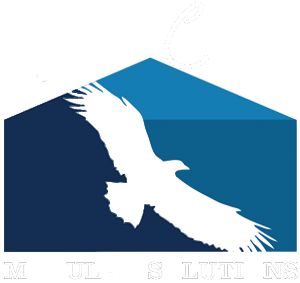Leader's in Green Building Design

The goal of most stakeholders using LEED™ as a building-rating tool is to achieve LEED™ certification. Certification is the process by which a project team fulfills the prerequisites and sufficient credit points in four possible levels: Certified, Sliver, Gold or Platinum. LEED™ is flexible enough to accommodate a wide range of green building strategies that best fit the goals of particular projects.
LEED™ - Leadership in Energy and Environmental Design
The Leadership in Energy and Environmental Design (LEED™) is a third party certification program and an internationally accepted benchmark for the design, construction and operation of high performance green buildings. It provides building owners and operators the needed tools to indentify and implement practical measures on the buildings performance.
Green Building Council members, representing every sector of the building industry, developed and continue to refine LEED™. The rating systems address eight major areas:
- Location and Planning
- Sustainable Sites
- Water Efficiency
- Energy and Atmosphere
- Materials and Resources
- Indoor Environmental Quality
- Innovation and Design Process
- Regional Priority
Modular Building and the USGBC’s LEED™ Version 3.0 2009 Building Rating System
This report was prepared at the request of the Modular Building
Institute (MBI).
Become Green
Benefits of Being Green
Modular construction techniques have been shown to be more environmentally-friendly than traditional stick built construction, yet many people are still unaware of these benefits.
Less Materials Waste
Pre-fabrication makes it possible to optimize construction materials purchases and usage while minimizing on-site waste and offering a higher quality product to the buyer. Bulk materials are delivered to the manufacturing facility where they are stored in a protected environment safe from theft and exposure to the environmental conditions of a job site.

Less Material Exposure to Inclement Weather
Many of the indoor air quality issues identified in new construction result from high moisture levels in the framing materials. Because the modular structure is substantially completed in a factory-controlled setting using dry materials, the potential for high levels of moisture being trapped in the new construction is eliminated.
Less Site Disturbance
The modular structure is constructed off-site simultaneous to foundation and other site work, thereby reducing the time and impact on the surrounding site environment, as well as reducing the number of vehicles and equipment needed at the site.
Safer Construction
Modular construction is a safer alternative. Conventional construction workers regularly work in less than ideal conditions dealing with temperature extremes, rain, wind, or any combination of natural conditions. This, by its very nature is a much more challenging environment to work safely in. Additionally, the potential for injury including falls, the most common work site risk, is much higher. In a factory controlled setting, each worker is typically assigned to a work station supplied with all the appropriate equipment needed to provide the safest work environment possible. Off-site construction also eliminates the hazards associated with materials, equipment and an incomplete construction processes typical of construction sites that can attract curious and unwelcome "visitors" (i.e. students on a school expansion project).
Flexibility
When the needs change, modular buildings can be disassembled and the modules relocated or refurbished for their next use reducing the demand for raw materials and minimizing the amount of energy expended to create a building to meet the new need.
Adaptability
Modular buildings are frequently designed to quickly add or remove one or more "modules" minimizing disruptions to adjacent buildings and surroundings.
Built to Code With Shorter Build Times
The bottom line is that with modular construction you can get a facility built to the same local codes with construction quality as good as or better than a comparable site built building in much less time. Additionally, the abbreviated construction schedule allows you to get a return on your investment sooner while minimizing the exposure to the risks commonly associated with protracted construction schedules.
Article from the Modular Building Institute - Sustainable Modular Design 7.13.07
Green Products

Are Green Products Really Green?
Identifying green products is an exercise in subjectivity. There are those who define green as 100% recycled and recyclable. Others define it as using less energy in manufacture, while others as improving the building users' health through reduction in toxic materials. Still others define green as employing more energy-efficient methodologies for heating, cooling, and lighting.
Green is all of the above and more. By our definition, green products are those that maintain or improve the human environment while diminishing the impact of their use on the natural environment-in other words, sustainable.
Green Criteria
Materials in use for sustainable design run the gamut from cotton insulation, to recycled asphalt paving, to photovoltaic arrays. Many of the products offer a green component that is at best incremental, offering performance or some other characteristic that is only slightly better than the conventional product. Use of these products by a small percentage of designers and contractors results in a positive effect that is barely measurable; common usage can make the effect global and lasting.
Green products fall into the following six categories, and many products have benefits in multiple categories. Note that these categories are somewhat subjective, and a product that falls into three categories is not necessarily any more green than a product that falls into only one category.
- Green process
- Improved sustainability
- Recycled content
- Recyclable
- Low toxicity
- Biodegradable
- Green Process
The product is manufactured with consideration for exposure of workers to chemicals, source of materials, energy-efficient production methods, use of recycled materials in packaging, reclaiming manufacturing waste, and prudent use of energy. Since many of these approaches actually save the manufacturer money, these principles are incorporated as manufacturing facilities are upgraded. Even manufacturers of plastics can effectively claim their manufacturing as a green process.
Improved Sustainability
The product is renewable and makes good use of available resources. Use of wood from well-managed forests for building framing is an example of renewable and sustainable product selection.
Recycled Content
The product is fabricated with post-consumer materials or post-industrial by-products. Many products, ranging from steel, to finish materials, to carpet cushion, are manufactured with recycled content. Other post-consumer materials include items such as plastic wood products fabricated using recycled plastic bottles. Products such as structural steel are always fabricated with both post-industrial (waste scrap) and post-consumer (salvaged steel) content.
Recyclable
The product can be reused or reprocessed after use and refabricated. We are most familiar with recyclable soda cans and bottles, but the same can apply to asphalt paving, masonry, metal framing, insulation, toilet compartments, and even carpet.
Low Toxicity
The product is less toxic than comparable products used for the same purpose. For example, wood particle board manufactured with resins that do not contain formaldehyde offers a less toxic environment for chemically-sensitive individuals and even for artwork stored in museums.
Biodegradable
The product returns to the earth naturally under exposure to the elements. The abandoned barn in the field eventually collapses and disappears. The subway car is dumped into the ocean as a marine habitat, and over time, the steel corrodes. We expect our buildings to last a lifetime, but it is not necessary for products to last thousands of years.
Excerpted from Green Building: Project Planning & Cost Estimating, 2nd edition, published by RSMeans.
Want more information about being Green?
Contact us for more information....
